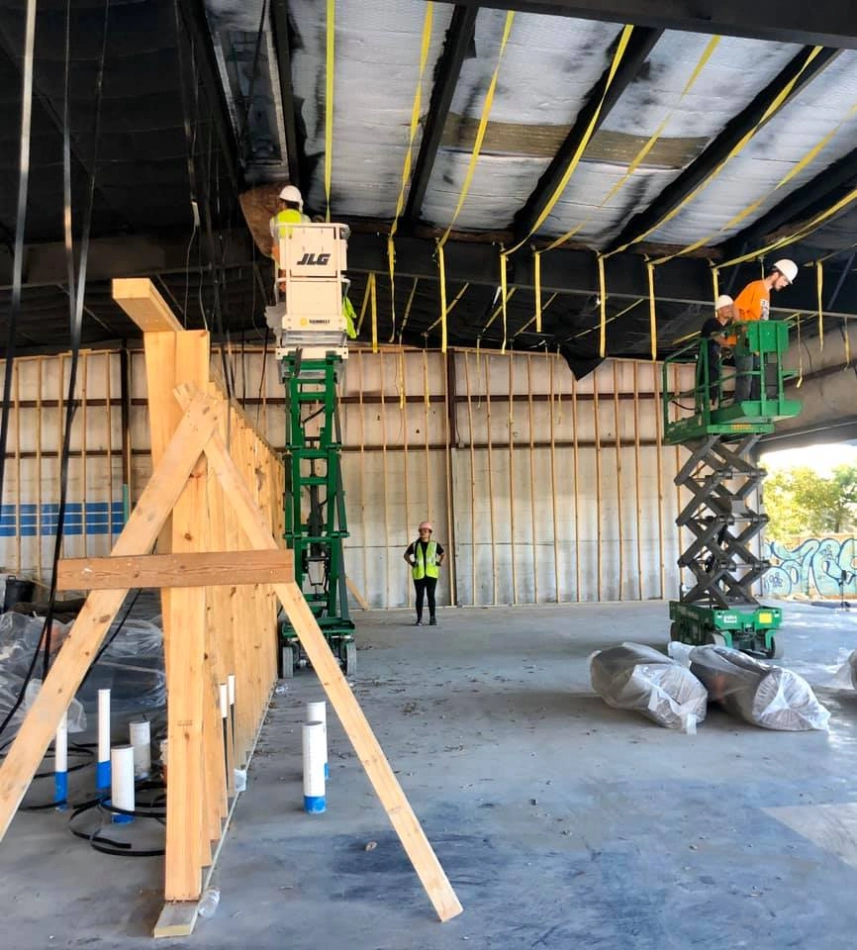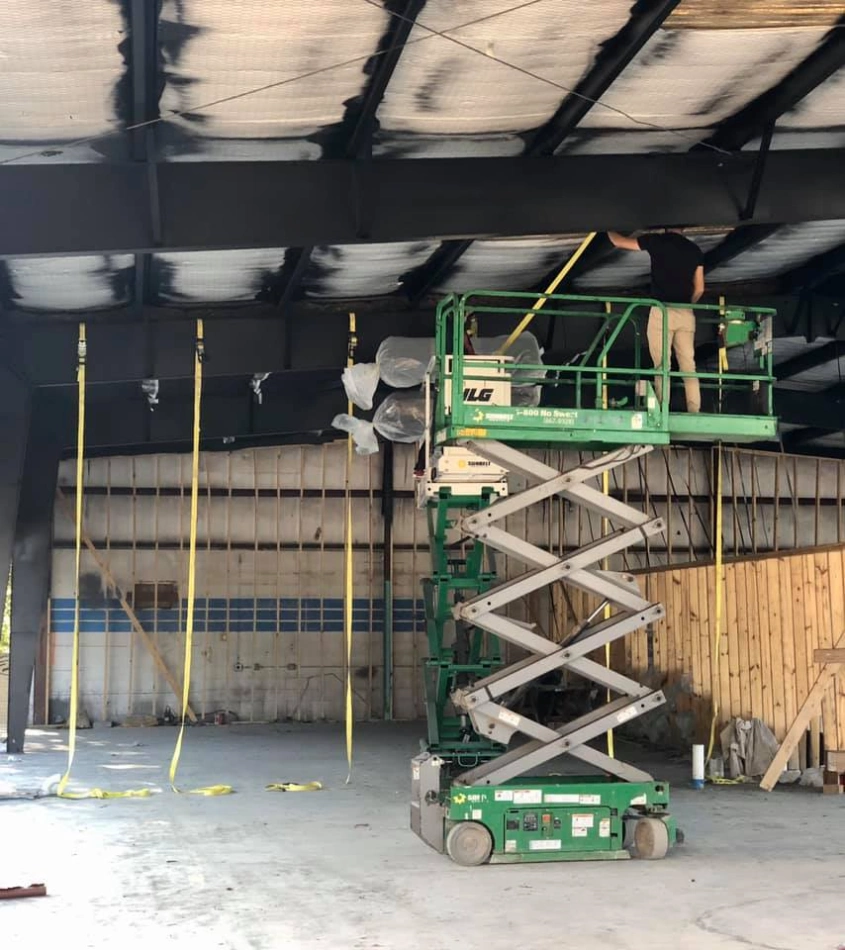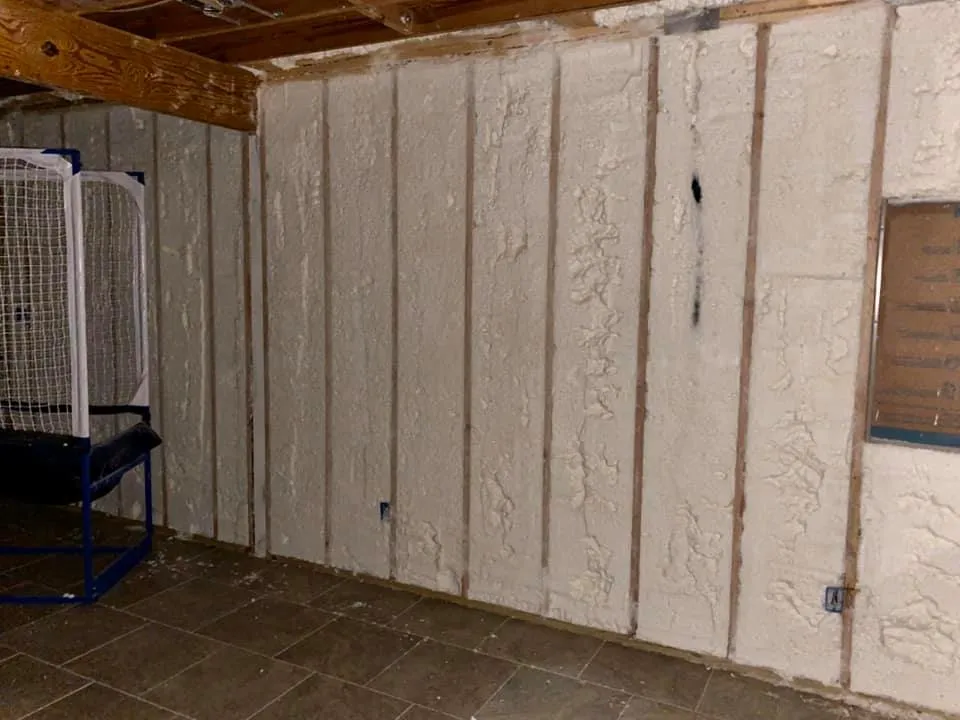Commercial spray foam insulation typically lasts 80-100 years when properly installed and maintained, making it one of the most durable insulation solutions available for business properties. Closed-cell spray foam demonstrates superior longevity compared to open-cell variants, maintaining its thermal performance and structural integrity for decades without significant degradation.
The exceptional lifespan of commercial spray foam stems from its chemical composition and installation method. Unlike traditional insulation materials that can settle, compress, or deteriorate over time, spray foam creates a continuous barrier that expands and hardens into a permanent seal. This durability translates to sustained energy efficiency and reduced maintenance requirements throughout the building’s operational life.
Factors Affecting Commercial Spray Foam Longevity
Several environmental and installation factors directly influence how long spray foam insulation maintains its effectiveness in commercial applications. Building exposure conditions play a crucial role, with temperature fluctuations, humidity levels, and UV radiation exposure affecting material performance over time.
Installation quality remains the primary determinant of longevity. Professional application ensures proper thickness, complete coverage, and adequate curing time, while substandard installation can lead to premature failure and reduced lifespan. The substrate condition and preparation also impact adhesion and long-term performance.
Building Environment Impact
| Environmental Factor | Effect on Longevity | Mitigation Strategy |
|---|---|---|
| Extreme Temperature Cycles | Reduces lifespan by 10-15 years | Proper HVAC design and building envelope |
| High Humidity Levels | Can cause degradation in open-cell foam | Adequate ventilation and moisture control |
| UV Radiation Exposure | Breaks down foam surface within 30 days | Protective coating or covering required |
| Chemical Exposure | Varies by chemical type | Material compatibility assessment needed |
| Physical Damage Risk | Can compromise sections permanently | Protective barriers during construction/renovation |
Bonus Tip: Regular visual inspections every 5-7 years help identify potential issues before they compromise the insulation system’s integrity. Look for discoloration, cracking, or areas where the foam has pulled away from substrates.
Performance Comparison Across Insulation Types
Commercial spray foam consistently outperforms traditional insulation materials in terms of lifespan and maintained thermal performance. This durability advantage becomes particularly significant in high-traffic commercial environments where other insulation types may experience accelerated wear.
| Insulation Type | Expected Lifespan | Performance Retention | Replacement Frequency |
|---|---|---|---|
| Closed-Cell Spray Foam | 80-100 years | 95% after 50 years | Once per building lifetime |
| Open-Cell Spray Foam | 20-30 years | 85% after 20 years | 2-3 times per building lifetime |
| Fiberglass Batts | 15-25 years | 70% after 15 years | 3-4 times per building lifetime |
| Cellulose | 20-30 years | 75% after 20 years | 2-3 times per building lifetime |
| Rigid Foam Boards | 50-75 years | 90% after 40 years | 1-2 times per building lifetime |
Research from the Spray Polyurethane Foam Alliance indicates that properly installed closed-cell spray foam maintains over 95% of its original R-value after 50 years of service. This performance retention significantly exceeds traditional insulation materials, which typically lose 20-30% of their insulating capacity within the first two decades.
Application-Specific Longevity Considerations
Different commercial applications present unique challenges that affect spray foam longevity. Warehouse environments with frequent temperature cycling may experience different wear patterns compared to office buildings with controlled climates. Understanding these application-specific factors helps predict realistic service life expectations.
Industrial facilities often expose insulation to harsher conditions, including chemical vapors, mechanical vibration, and extreme temperature variations. These environments may reduce spray foam lifespan by 15-20 years compared to standard commercial applications, though the material still outperforms alternatives.
Bonus Tip: Document installation conditions and environmental factors during application. This baseline information proves invaluable for warranty claims and helps establish realistic maintenance schedules for optimal performance.
Commercial Application Longevity Data
| Application Type | Expected Service Life | Key Limiting Factors | Maintenance Requirements |
|---|---|---|---|
| Office Buildings | 80-100 years | HVAC system cycling | Minimal, visual inspection every 7 years |
| Warehouses | 70-90 years | Temperature extremes, mechanical damage | Protective measures, inspection every 5 years |
| Manufacturing Facilities | 60-80 years | Chemical exposure, vibration | Chemical compatibility check, annual inspection |
| Cold Storage | 75-95 years | Thermal cycling, moisture | Vapor barrier maintenance, bi-annual inspection |
| Data Centers | 85-100 years | Controlled environment | Standard maintenance, inspection every 10 years |

Things to Consider Before Installation
Several critical factors require evaluation before installing commercial spray foam insulation to ensure optimal longevity. Building design characteristics, including structural materials and anticipated thermal loads, influence both application method and expected service life.
Budget considerations extend beyond initial installation costs to include long-term maintenance requirements and potential energy savings over the building’s operational period. The higher upfront investment in quality spray foam application often provides superior return on investment through extended service life and maintained performance.
Climate zone requirements also affect foam selection and application parameters. Buildings in extreme climate regions may benefit from specific foam formulations designed to withstand local environmental conditions while maintaining optimal longevity.
Common Installation Questions
Why are proper installation requirements important for commercial spray foam insulation?
Understanding proper installation requirements helps ensure maximum longevity from commercial spray foam insulation systems. These pre-installation considerations directly impact long-term performance and service life expectations.
What surface preparation is required before spray foam application?
Substrates must be clean, dry, and free from oils or release agents that could compromise adhesion. Temperature and humidity conditions during application significantly affect curing and final performance characteristics.
How thick should spray foam insulation be applied?
Proper thickness ensures adequate thermal performance while avoiding over-application that can lead to curing issues or cracking. Building codes specify minimum requirements, but optimal thickness varies based on climate zone and intended use.
What quality control measures are taken during commercial spray foam installation?
Professional installation includes temperature monitoring, thickness verification, and adhesion testing to ensure proper application and maximize service life potential.
Stellrr Commercial Insulation Solutions
Stellrr specializes in commercial spray foam applications designed for maximum longevity and performance in demanding business environments.
- Commercial Spray Foam Insulation: Complete building envelope solutions using premium closed-cell and open-cell foam systems engineered for extended service life and optimal thermal performance.
- Commercial Building Insulation: Comprehensive insulation services including walls, roofs, and specialized applications tailored to specific commercial requirements and environmental conditions.
- Closed Cell Insulation: High-performance barrier systems providing superior moisture resistance and structural reinforcement for demanding commercial applications requiring maximum durability.
- Open Cell Insulation: Cost-effective solutions for interior commercial applications where breathability and sound dampening complement long-term thermal performance requirements.
Maximizing Your Investment
Commercial spray foam insulation represents a long-term building investment that provides decades of energy savings and comfort when properly installed and maintained. The exceptional 80-100 year lifespan of quality spray foam systems delivers sustained value through consistent thermal performance and minimal maintenance requirements.
Building owners should focus on professional installation quality and appropriate foam selection based on specific environmental conditions and performance requirements. This approach ensures optimal longevity and return on investment throughout the building’s operational life.
Professional Installation and Consultation
Stellrr provides expert commercial spray foam installation services backed by years of experience in diverse commercial applications. Professional consultation helps determine optimal foam selection and application parameters for maximum longevity in specific building environments.
Contact Stellrr at info@stellrr.com or (512) 710-2839 to discuss commercial spray foam solutions designed for your building’s long-term performance requirements. Expert installation ensures your insulation investment delivers optimal value and performance for decades to come.
Frequently Asked Questions About Commercial Spray Foam Longevity
How does spray foam longevity compare in different climate zones?
Spray foam performs consistently across climate zones, though extreme conditions may reduce lifespan by 5-10 years. Arctic and desert environments present the greatest challenges, while moderate climates allow foam to reach maximum service life potential. Proper foam selection and protective measures help optimize performance in challenging climates.
What maintenance extends commercial spray foam service life?
Regular visual inspections every 5-7 years identify potential issues before they compromise system integrity. Protecting foam from UV exposure, maintaining proper building envelope function, and addressing any mechanical damage promptly helps achieve maximum service life. Most commercial installations require minimal maintenance when properly installed.
Can spray foam longevity be verified through testing?
Core sampling and thermal imaging can assess foam condition and performance retention in existing installations. These diagnostic methods help verify system integrity and identify any areas requiring attention. Professional assessment provides objective data on remaining service life and performance characteristics.
How do building modifications affect spray foam longevity?
Renovations and building modifications can impact foam performance if proper precautions aren’t taken. Protecting foam during construction activities and ensuring proper sealing around new penetrations maintains system integrity. Professional assessment after major modifications helps identify any areas requiring repair or additional treatment.
What warranty protection exists for commercial spray foam installations?
Quality commercial installations typically include material and workmanship warranties ranging from 10-25 years, depending on application and environmental conditions. These warranties provide protection against premature failure and performance issues when proper installation and maintenance protocols are followed. Documentation of installation conditions and regular maintenance supports warranty coverage throughout the service period.





